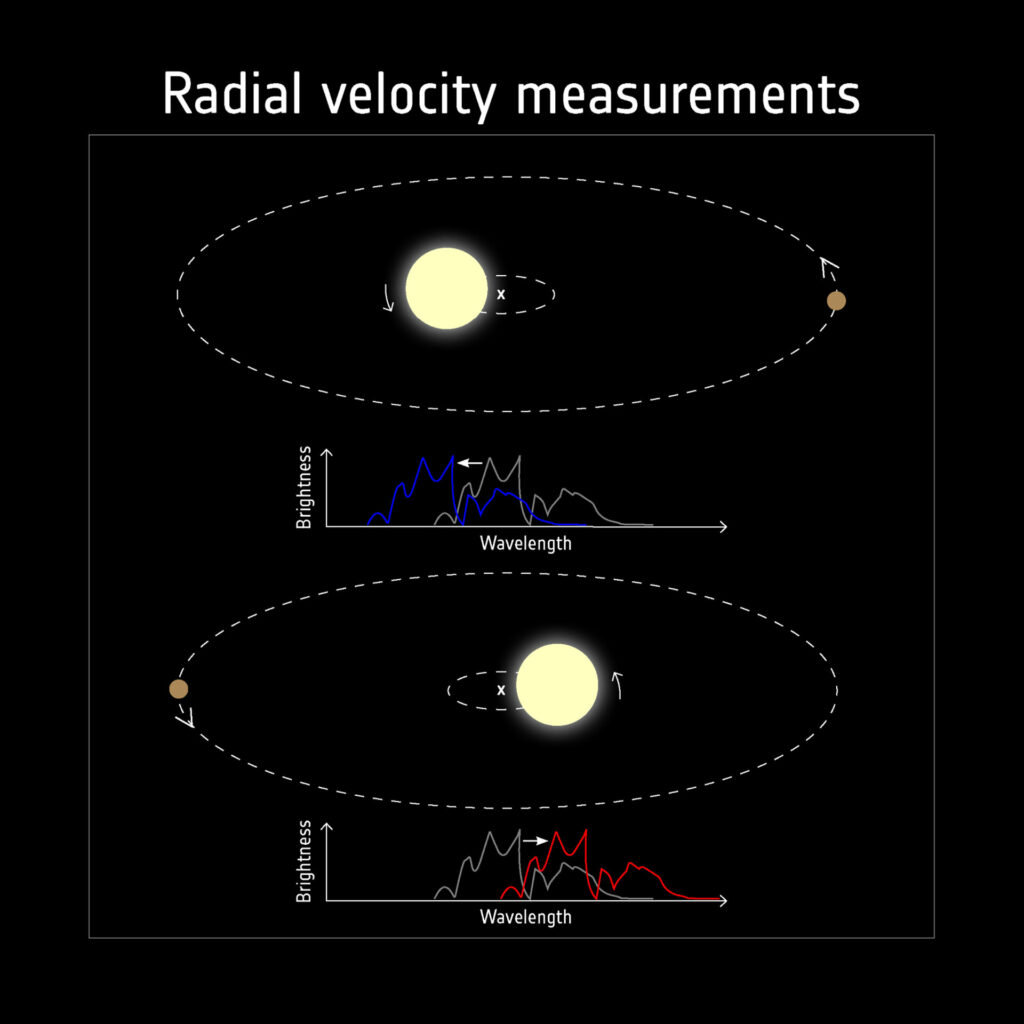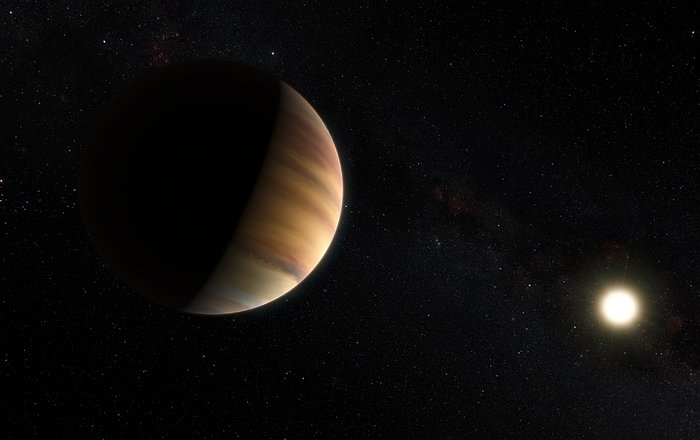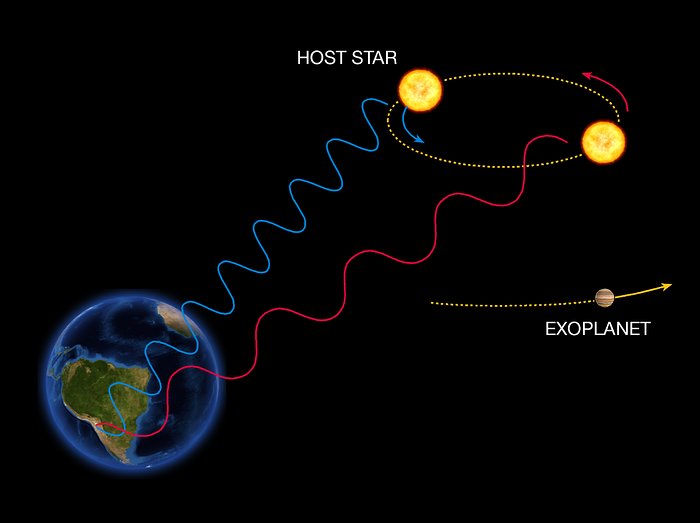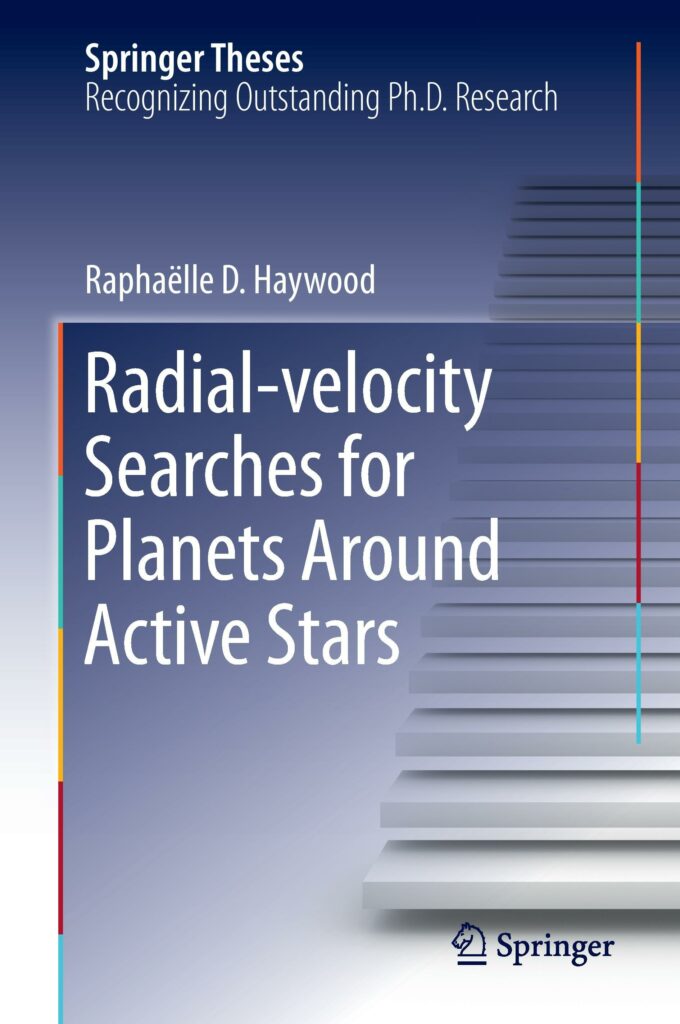The most common methods for finding exoplanets are transit and radial velocity.
How it works:
The method is based on the planet and its star orbiting around a common center of mass, i.e., the planet causes a periodic oscillation (“wobble”) in the star. We can observe these periodic fluctuations in the star and thereby infer the existence of a companion, even if we do not see it directly. Since we measure with it the movement of the star towards us or away from us, we speak of “radial velocity method”.

As the star moves toward us, the wavelengths shift to shorter, blue ones (see top illustration). If it moves away from us, the wavelengths shift to longer, red ones.
Animation:
Credit: eso.org
The first exoplanet orbiting a Sun-like star was discovered with the radial velocity method
Michel Mayor and Didier Queloz discovered the first exoplanet in 1995 using the radial velocity method. Pegasi 51 b, also called “Dimidium”, is a hot Jupiter and orbits the Sun-like star Helvetios in the constellation Pegasus.

The Geneva research team received a Nobel Prize in 2019 for this discovery.

Interesting questions on the topic:
Q: How can we measure the periodic motion of the star?
A: Through the so-called Doppler effect, the periodic motion of the star causes a recurring shift of the stellar spectrum to longer, red wavelengths when it is moving straight away from us, or to shorter, blue wavelengths when it is moving towards us.

Q: What type of telescope is used to perform the radial velocity method?
A: Is measured with spectroscopy via the red-blue shift.
Q: What parameter is obtained by the radial velocity method?
A: The mass of the planet. How strong the planet influences the star depends on the masses of both objects. So, if we have the mass of the star, we can calculate the mass of the planet from the Doppler measurement. However, this only works if we know the inclination of the planet, i.e. the angle of its orbit around the star. This is not obvious from a pure radial velocity measurement, so we only get a lower limit for the planet mass. However, an additional observation of the planet with the transit method (see there) can help e.g. to determine the inclination and thus makes the mass determination possible.
By the time intervals of the displacements we also get the orbital period of the planet.
Q: Which planets are particularly suitable for the radial velocity method?
A: The more massive a planet, the more it influences its central star and the easier it is for us to measure the variations. Therefore, for example, Jupiter-sized planets (300 times heavier than Earth) are easier to detect than Earth-sized ones.
A star is more strongly influenced the lighter it is, so the method favors planets in orbit around small, light stars like M dwarfs.
Finally, the fluctuations in the stars radial velocity can more easily be shown to be a periodic occurance caused by a planet, if you have a lot of planetary orbits recorded. Thus, it is easier to find planets that have a very short orbital period and are therefore close to their star.
Recommended book on the topic:

Radial-velocity Searches for Planets Around Active Stars
Raphaëlle D. Haywood
Publisher: Springer Verlag
ISBN: 978-3-319-41273-3
Find more books to the topic exoplanets and astronomy for children, amateurs and scientists in our booklist.
Get back to the outreach page
